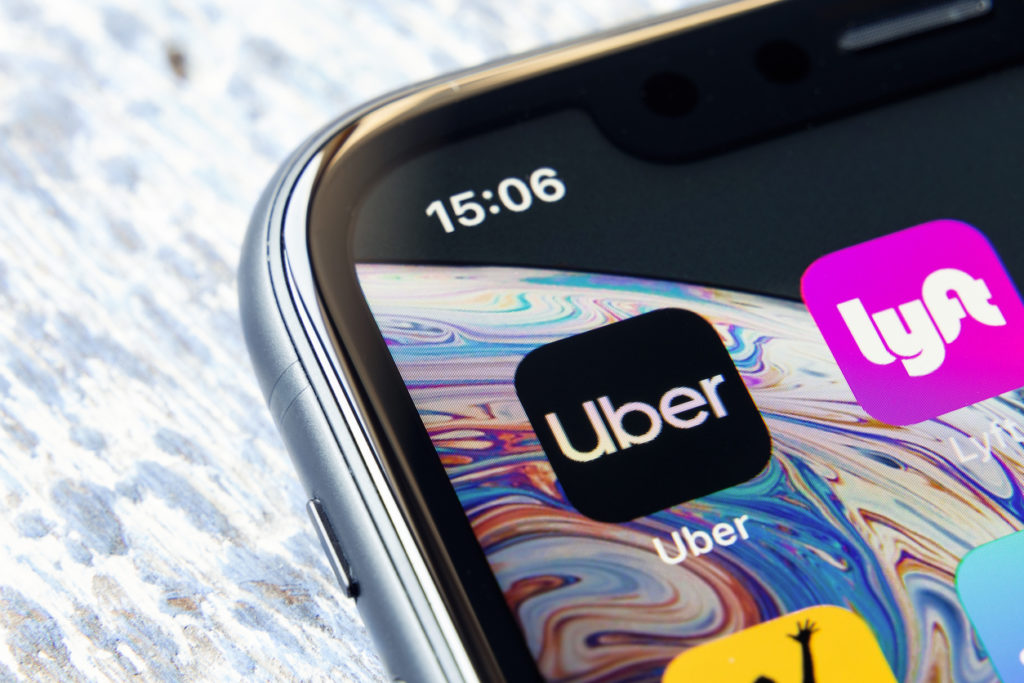- News
- How are Rideshare Services like Uber and Lyft Different from Taxis?
How are Rideshare Services like Uber and Lyft Different from Taxis?

Rideshare services like Uber and Lyft allow their users to request a ride with just a few taps on their phone. The convenience and near ubiquity of these cashless services have earned them great popularity, but many riders have understandable concerns about getting into a stranger’s car—especially when they could just hop into a taxi instead. In this article, we will walk you through the differences between rideshare services and taxis and explain how these differences affect their safety.
What are Rideshare Services and How Do They Work?
Uber, Lyft, and other rideshare services are software companies at their core. They facilitate interactions between their drivers and riders and provide a platform through which they can interact. They don’t actually own most of the vehicles that bear their stickers and, apart from those involved with some of their premium services, the drivers that work for Uber and Lyft are independent contractors, not employees. While both services are largely built around coordinating rides between car drivers and riders, they also have their hands in other types of transportation. You can rent an electric bike or scooter through both apps and they also both offer live updates on public transit options.
Uber and Lyft both function mainly through apps on smartphones, though riders can also use their websites to request a ride. The rider apps allow customers to request rides, select preferences, make payments (including tips), and rate their driver after the interaction. Driver apps offer turn-by-turn guidance, the ability to accept rider requests, and a similar system that allows them to rate their riders. These ratings are often essential for establishing trust between driver and riders and dispelling worries about getting into a car with a stranger.
What are the Requirements to Become a Rideshare Driver?
Drivers are required to meet the following standards before beginning work:
For Uber nationwide
- Meet the age requirement for your region (21 for Michigan)
- Have at least one year of licensed driving experience in the US (3 years if you are under 25 years old)
- Have a valid US driver’s license
- Proof of residency in your city, state, or province
- A driver profile photo
- Pass a driver’s screening that reviews your driving record and criminal history
- Have a phone that can download and run the Uber driver app
- Be at least 25 years of age
- Have a valid driver’s license — Temporary or out-of-state licenses are also acceptable.
- Pass a driver screening that reviews your driving record and criminal history.
- Have a phone that can download and run the Lyft driver app
And their vehicles must meet the following criteria as well:
- Not older than 15 years
- 4-door vehicle
- Good condition with no cosmetic damage
- No commercial branding
- Proof of personal Michigan No-Fault Auto Insurance
- Proof of vehicle registration
- Pass a vehicle inspection if it is over five years old
- 2009 or newer
- 4-door vehicle
- 5-8 seats, including the driver
- Not a taxi or stretch limousine
- Not titled as salvage, non-repairable, rebuilt or any other equivalent classification
Vehicles operating under specific programs such as Uber Black and Lyft Lux are required to meet higher standards.
What are the Requirements to Become a Taxi Driver in Michigan?
Michigan taxi drivers are required to get a chauffer’s license through the state government. In order to earn one, drivers must
- Have a valid Michigan driver’s license
- Have proof of citizenship or legal presence in the U.S.
- Have proof of your Social Security Number (if applying for an enhanced license)
- Pass a vision test
- Pass a written knowledge test
- Pay a $35 fee ($50 for an enhanced license)
Taxi drivers in most cities throughout the country also undergo drug testing, background checks, and fingerprinting.
Insurance Requirements
The Insurance coverage provided in accidents involving Uber and Lyft vehicles is dictated by which stage of the ride that accident occurred in. If the driver was offline in their app, neither Uber nor Lyft will provide coverage and the driver’s personal insurance is used. If the app is on and the driver is waiting for a ride request when the accident happens the following coverage applies:
- $50,000 in bodily injury per person
- $100,000 in bodily injury per accident
- $25,000 in property damage per accident
If the driver is en route to pick up the passenger, the passenger is entering the car, or the driver is transporting the passenger to their destination the following coverage applies:
- $1,000,000 third-party liability
- Uninsured/underinsured motorist bodily injury and/or first-party injury insurance
- Contingent comprehensive and collision (up to actual cash value of car with a $2,500 deductible)
Taxi drivers are required to have much less than the maximum coverage rideshare services provide, but this insurance does not disappear or decrease throughout their day. According to the Michigan Limousine, Taxicab, and Transportation Network Company Act of 2016, taxicab carriers are required to have $300,000 of bodily injury and property damage liability insurance in addition to personal protection insurance and property protection insurance. Uber and Lyft leave their drivers much better covered during the most dangerous parts of the ride, though their drivers should be certain they are aware of how this coverage fluctuates.
Paper Trail
Rideshare companies may offer warry customers some reassurance that their apps keep a paper trail. These services, unlike taxis, track their rides and leave a record of your interactions. Both Uber and Lyft also have options to allow trusted contacts to follow your location as you ride.
Which is Safer?
Getting into any vehicle—whether it’s Uber, Lyft, Taxi, or personal car—is never risk free. Roads are dangerous and crashes can be catastrophic. But driving with a stranger behind the wheel can leave riders especially unsettled. While there is no way to ensure that either a rideshare or taxi driver is perfectly trustworthy, both are required to pass background checks. Taxi drivers likely to have experience and knowledge, as they are required to have a chauffer’s license and 79% of taxi drivers drive full time. Rideshare services, on the other hand, give riders the opportunity to give drivers feedback through rating systems. Companies like Uber and Lyft also have higher insurance coverage while the driver is actively working and leave a paper trail that can be useful in lawsuits. These benefits mean that despite their instincts, riders are oftentimes safer in a rideshare vehicle than they would be in a taxicab.
Hurt in an Accident involving an Uber, Lyft, or Taxi? Call us for Help!
Whether you were behind the wheel, in the back seat, or outside the vehicle entirely, auto-accidents are painful and very frustrating, especially when a big company like Uber or Lyft is involved. Our expert attorneys at the Mike Morse Law Firm know how to help you navigate this difficult time and get you the compensation you deserve. Contact us through our website or give us a call at 855-MIKE-WINS (855-645-3946) to set up a free consultation.

Content checked by Mike Morse, personal injury attorney with Mike Morse Injury Law Firm. Mike Morse is the founder of Mike Morse Law Firm, the largest personal injury law firm in Michigan. Since being founded in 1995, Mike Morse Law Firm has grown to over 200 employees, served 40,000 clients, and collected more than $1.5 billion for victims of auto, truck and motorcycle accidents. The main office is in Southfield, MI but you can also find us in Detroit, Sterling Heights and many other locations.








